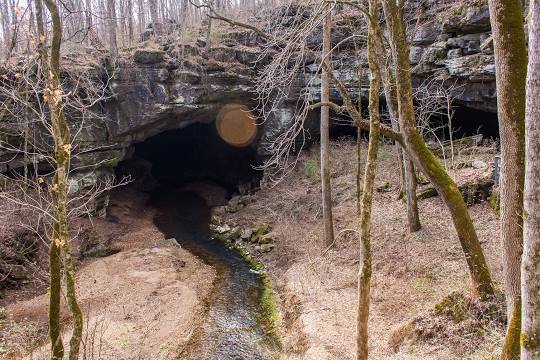
Russell Cave National Monument is a U.S. National Monument in northeastern Alabama, United States, close to the town of Bridgeport. The monument was established on May 11, 1961, when 310 acres of land were donated by the National Geographic Society to the American people. It is now administered and maintained by the National Park Service. The National Monument was listed on the National Register of Historic Places on October 15, 1966. Russell Cave has an exceptionally large main entrance, which was used for thousands of years as a shelter by cultures of prehistoric Indians, from approximately 6500 BCE, the period of earliest-known human settlement in the southeastern United States, to 1650 CE and the period of European colonization. It is believed to have primarily served as a seasonal winter shelter. The people relied on the surrounding forest to gather produce and hunt for game and fish, stone and game for tools, and wood fuel for fires. Guided tours of the shelter area are available. With a mapped length of 7.2 miles, Russell Cave is the third-longest mapped cave in Alabama.
